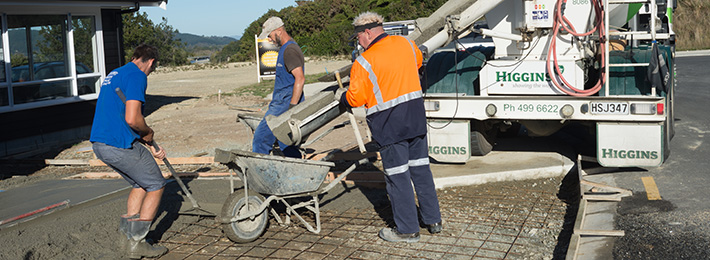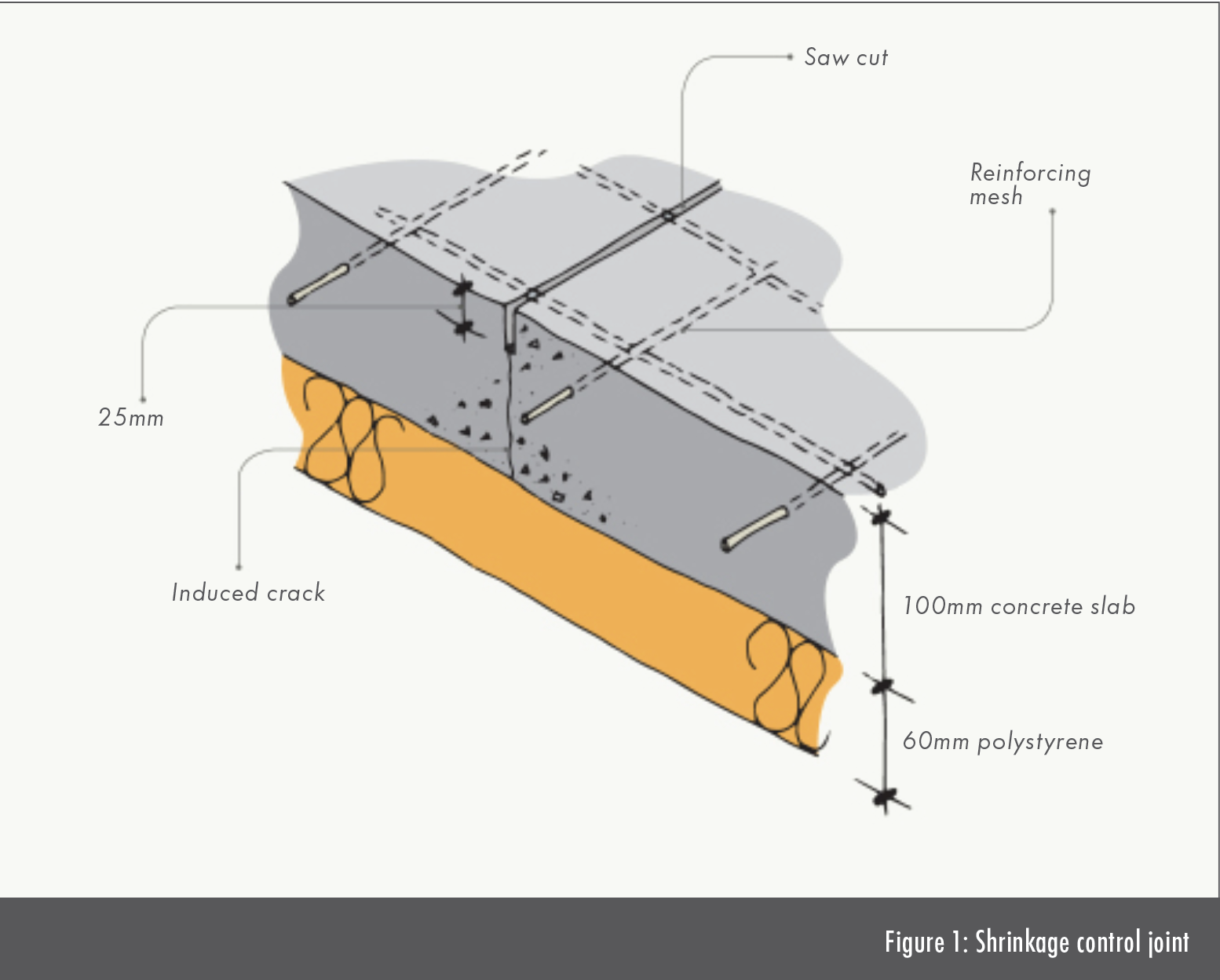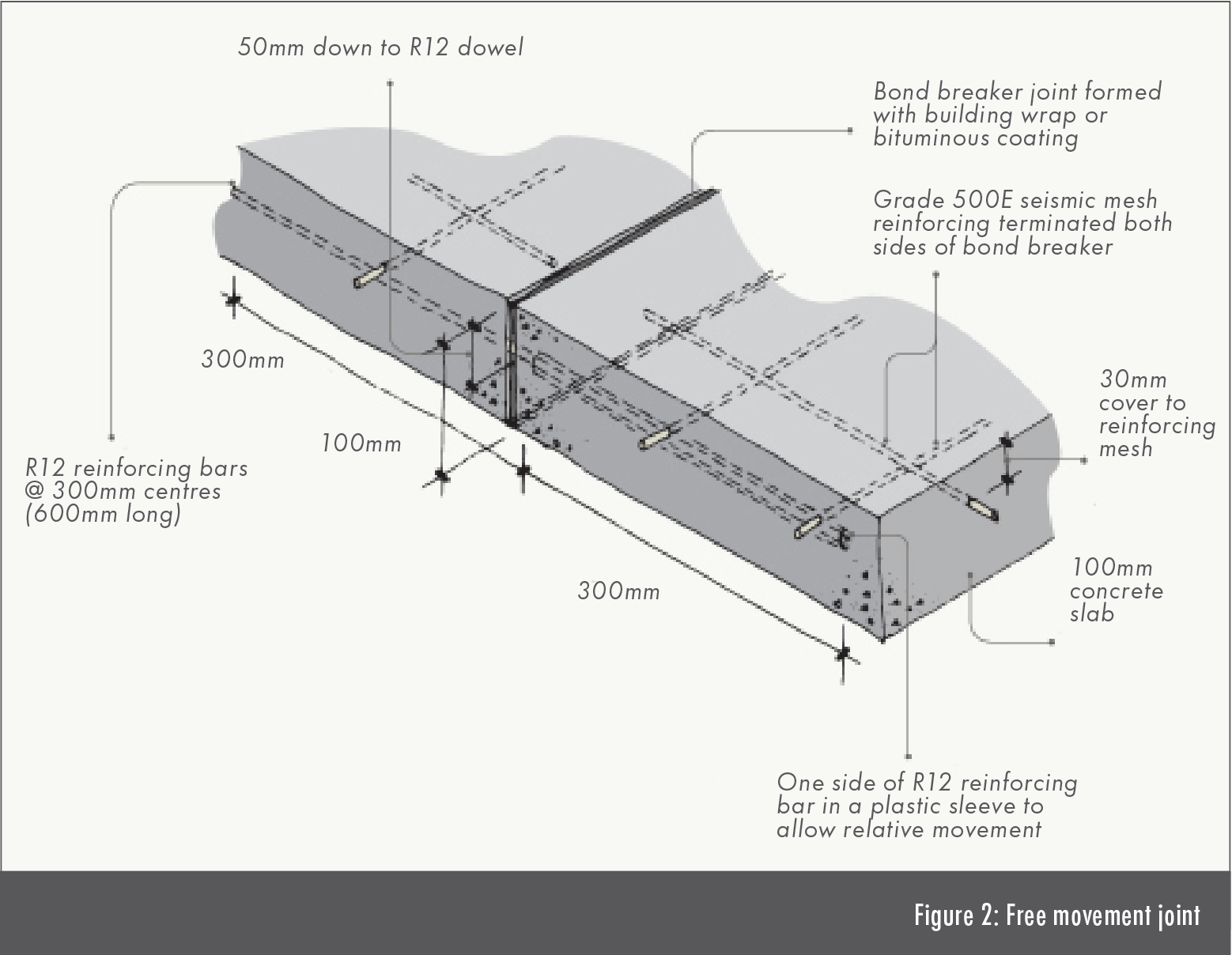Concrete slabs made easy
17 Jan 2017, Featured, Prove Your Know How, Technical

Fresh concrete carries an expiry date – if you’re not well organised with the right skills and equipment, you could have a disaster on your hands!
There is plenty to consider when laying a concrete floor slab; timing, the right amount of water and aftercare are three of the most crucial.
Once the concrete starts mixing, the clock is ticking! NZS 3104:2003 Specification for concrete production states that full discharge of concrete from ready-mix trucks shall be completed within 90 minutes after the commencement of mixing.
This is probably a little-known clause, but we all know that concrete will stiffen as the cement starts to ‘go off’, particularly in hot weather. The use of retarding admixtures in summer and accelerating admixtures in winter will help alleviate issues, but being unprepared for the concrete truck comes down to bad planning.
Preparation, mix and workmanship key
BRANZ Bulletin 498 Preparation for concrete floor slabs outlines key areas needing attention when preparing for a concrete pour. Also, the recent BRANZ Study Report 340 Revisiting concrete ground floor slabs concludes that good mix design and workmanship are the key to producing crack-free concrete.
Even though the concrete pour is typically carried out by a specialist subcontractor, it pays for the supervising contractor to be aware of the facts.
Issue of uncontrolled cracking
Uncontrolled cracking is undoubtedly the biggest issue with concrete floors and pavements.
As soon as the concrete starts to dry out, shrinkage commences and there is potential for cracking to occur given the low tensile strength of immature concrete. Water in the concrete mix is the biggest cause of shrinkage.
There needs to be just enough water to make the concrete workable, in order to place and compact it. Inevitably, around 7mm of shrinkage will occur over a 10m length of slab. If more water is added to increase the slump of the concrete and make it easier to place, this shrinkage could increase to 12mm in a 10m slab length.
Controlled addition of water
Did you know that NZS 3104:2003 allows the addition of water to the truck, provided it’s in a controlled manner – up to 10L/m3 of concrete?
This is because the concrete may dry out through evaporation from the truck, particularly during summer’s higher temperatures. This makes it hard to get the stiff concrete out of the truck, place it and fully compact it.
Also, where the transit time from the concrete plant to the site is considerable, slump loss may be an issue. Adding water is okay, but it must be a measured amount and with the agreement of the concrete plant.
Adding 10L/m3 only represents around 5% of the total water content of concrete and replaces the water lost through evaporation. Adding water in an uncontrolled manner is inviting problems of high shrinkage and low strength.
Concrete needs early attention
Concrete is vulnerable until it has gained some strength. The hydration of cement is a chemical reaction affected by temperature and the presence of moisture. As soon as the fresh concrete starts to dry to the atmosphere, shrinkage will commence and strength gain will slow. The critical areas to focus on are finishing, curing, saw cutting and mesh placement.
Finishing
A slab is very exposed to the weather when being placed, finished and cured. Avoid rain, strong drying winds (particularly in spring), hot sunny conditions and large temperature drops overnight, as they can all cause cracking.
Download a localised weather forecast – some concrete suppliers offer this as part of their service. If conditions are unfavourable for concreting, delay the pour rather than taking a risk.
Curing
Curing ensures that the concrete does not dry out prematurely and gains strength from an early age. If the commencement of curing is delayed, you cannot make up for it by curing later – you will lose around 50% of the potential concrete strength.
Curing is achieved by flooding the concrete or sprinkling the entire surface. Alternatively, a plastic sheet can be laid on the surface and weighed down with sand or the like, so that wind cannot get under the sheet.
Curing should begin the day after pouring in summer, before the concrete surface has had a chance to dry out. Unfortunately, adequate curing is often ignored in practice – yet it is critical to achieving concrete strength gain and avoiding shrinkage cracking.
Saw cutting
NZS 3604:2011 Timber-framed buildings requires saw cutting – which creates weak links for shrinkage cracking to occur – to take place the day after pouring in summer and two days after pouring in winter (see Figure 1). This timing is critical, and the occurrence of uncontrolled cracking due to late saw cutting is far too common.
Once uncontrolled shrinkage cracks have formed, the saw-cut joints will not act as the weak link for shrinkage cracking to occur. Movement will always take place preferentially at the existing cracks.
Mesh placement
For slabs designed to NZS 3604:2011, the spacing of saw-cut joints, shrinkage movement joints and location of the reinforcing mesh are all important in avoiding shrinkage cracking. The reinforcing mesh needs to be at 30mm cover to the top of the slab (see Figure 2). Its main function is to prevent shrinkage cracks occurring between saw-cut joints.
To ensure the mesh is at the correct height, support it on mesh chairs. The required reinforcing mesh required is grade 500E (seismic mesh) 2.27kg/m² welded wire mesh.
The maximum distance between saw-cut joints is 6m, and every fourth joint should be a free movement joint at a maximum spacing of 24m (see Figure 2).
Where parts of the floor are exposed, such as for a coloured or polished floor, the saw-cut spacing should be reduced to 5m.
This text was provided by Derek Chisholm, author of Concrete Solutions.
BRANZ February Frenzy book sale – BRANZ is offering up to 50% off 60 titles including:
Home maintenance books
- Designing for maintenance
- Maintaining your Home
Repair and renovation books
- Good Repair Guides
- Renovate series
- Level Sustainability series
- Good Practice Guides
- Building Basics series
Teaching and learning aid books
- House Building Guide
- House Insulation Guide
- Landscape Construction
- Plumbing and Drainage Guide
- Selecting Timber
Visit www.branz.co.nz/booksale to get yours!


Register to earn LBP Points Sign in
2 Comments
Leave a Reply
You must be logged in to post a comment.




Nice quiz
good one